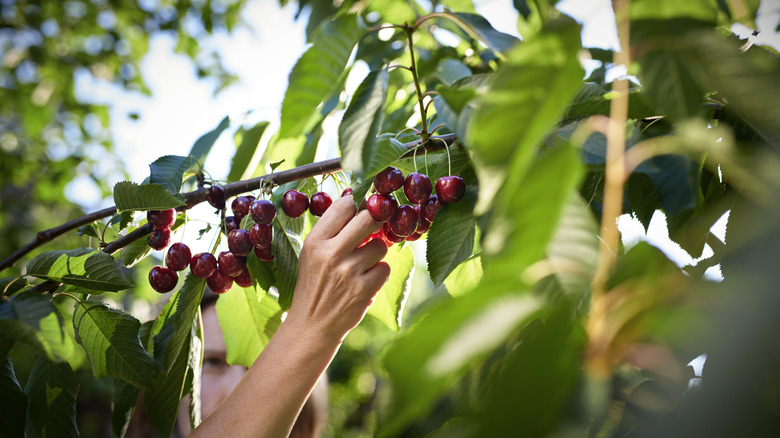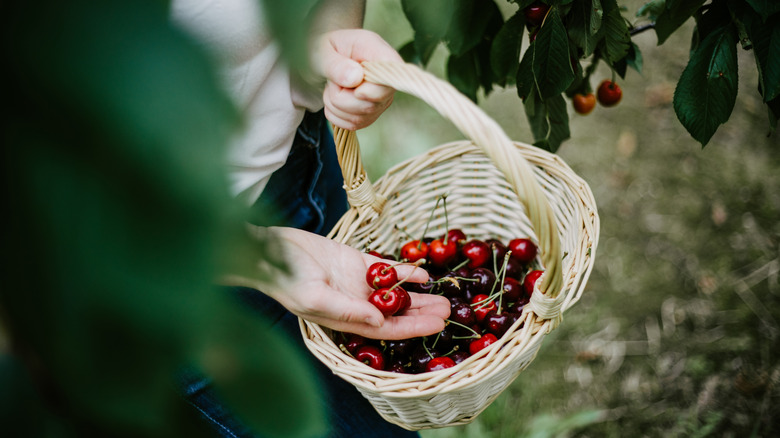When Is The Best Time To Harvest Cherries?
Harvesting your own crop from a fruit tree you have grown is incredibly satisfying, especially when the fruit is delicious. Cherries are a fabulous treat, but harvesting them too soon can result in a lack of flavor. As the harvest season is shorter in cherry trees than in some other fruit trees, it is essential to know what to look out for to ensure you pick the fruit at the perfect time.
There is a huge range of cherry tree varieties, and they all tend to ripen at slightly different times of the year. In general, sour cherries ripen around mid-June to late July, and sweet cherries ripen around early June to late July, but the season varies depending on the region and cherry type. If you aren't too sure about what type of cherry tree you have, it is helpful to look at signs and clues to determine if your cherries are ready to harvest.
Take a look at the color of the fruits. They should all be uniform in color with no patches of green or yellow. Another clue to ripeness is the feel of the fruit, as a ripe and ready-to-harvest cherry will feel smooth and round. A ripe cherry should also be easy to pull from the tree, so give the fruit a slight tug when you think they are ready. If they come off without much effort, your cherries are probably ripe. After picking one, you may want to taste it before harvesting the rest. A ripe cherry is a juicy one!
Factors that affect when cherries ripen
The time when cherries are ready to be harvested depends on the region and climate. In the Southern U.S., cherry season can begin in late April. However, in colder climates, such as the Northeastern U.S., the season can extend from late June to August. Cherry season can also change from year to year in the same location. This is because the spring weather affects how quickly the cherries will ripen. If we have a mild spring, cherries may ripen sooner. However, if we have a year of late frosts, cherries may not be ready to harvest until later.
Another significant factor that affects cherry season is the growing conditions of the tree. If your cherry tree is not getting what it needs to thrive, it may not produce cherries consistently. To help it out, ensure you are pruning your tree and providing it with fertilizer and water. You should also keep an eye out for common fruit tree diseases throughout the year.
If your cherries are ready to harvest, it is best to do so straight away, as leaving the fruit on the tree for too long can run the risk of damage. Cherries are soft fruits when ripe and can crack on the tree if there is excessive rainfall. When harvesting cherries, it is best to hold the stalk instead of the fruit to avoid any bruising. Gently grip the stem and twist to remove it from the tree. Cherries need to be stored as soon as they are picked, as they will soften and possibly become damaged in hot weather.

